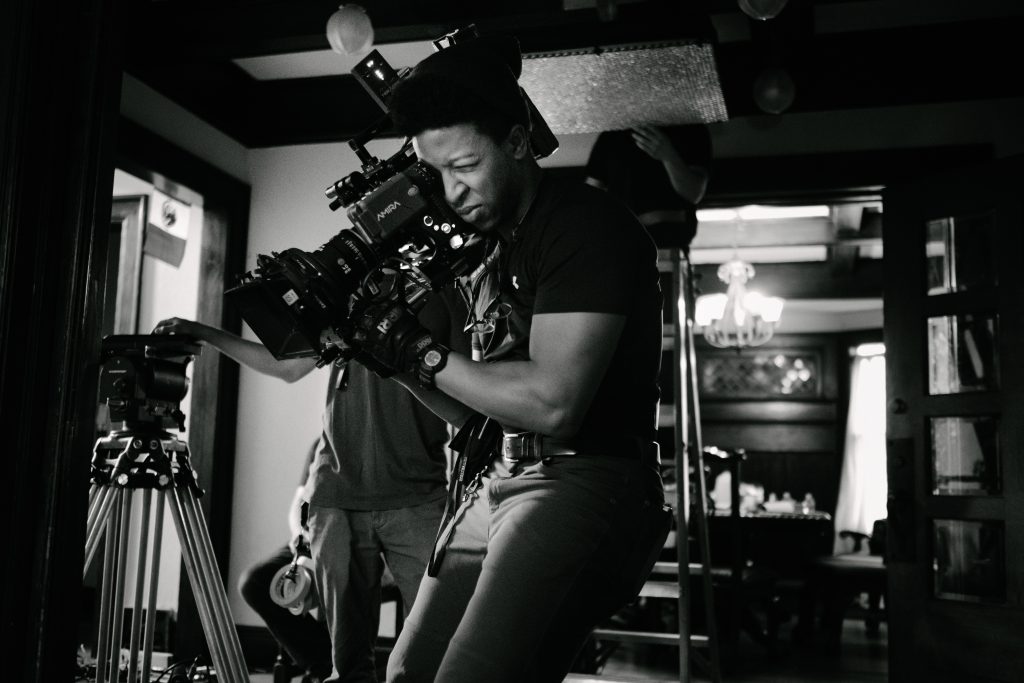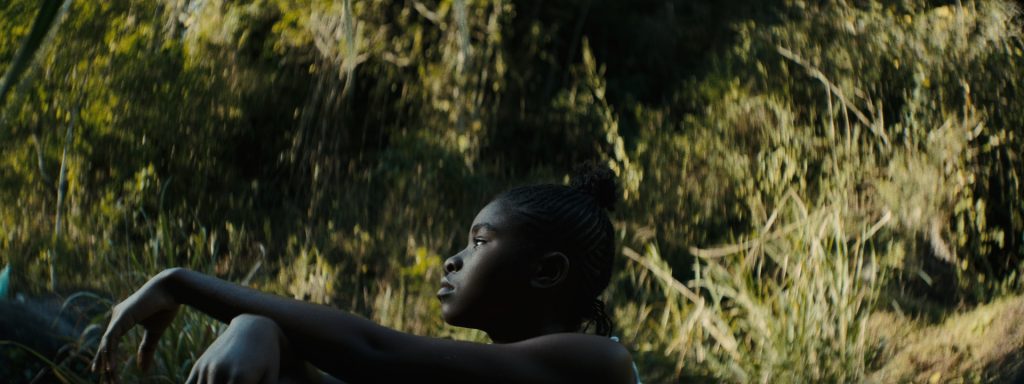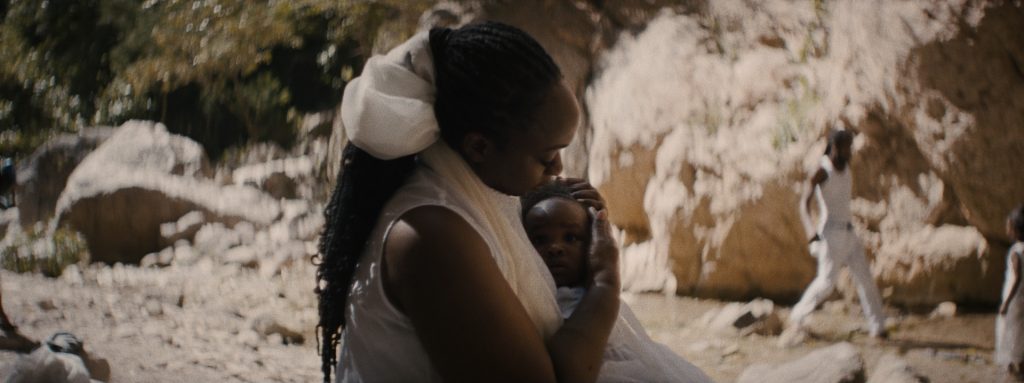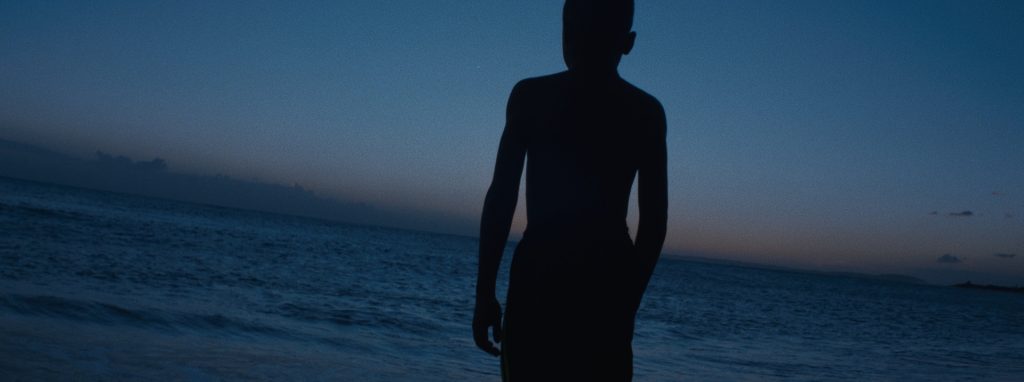Throughout February, we are featuring a series of discussions with some of today’s most influential Cinematographers and Gaffers of color. These artists talk about their journey into the industry, advice to young aspiring artists, and the art that has had an impact on their work. This edition features Cinematographer Chayse Irvin (Hannah, BlackKklansman, and the upcoming film Blonde.)
When did you become interested in working in film? What made you want to get into the industry?
I have a picture of me at age seven telling my parents I wanted to be a filmmaker. In a way, I remember the moment. I remember thinking that I had figured out some cosmic exploit. Through filmmaking, I could live a million lives. I could work on a film about a person whose life was fundamentally different than my own and inhabit their world. Even as a child something about that felt magical. Even now, what I love about filmmaking is that to visualize the story of another, the storytellers must first empathize and understand the characters—they must open their hearts to them and their world.
Describe your journey in becoming a Cinematographer. Historically speaking, the camera & lighting community has not been very diverse. What was the process like for you?
Early on in my career cinematographers like Shawn Peters were generous enough to have me on set. I had come up to him at a premiere for a movie he had shot and begged to work for him—truly begged. I would do any job. I just wanted to understand more about how he worked. How and why he made decisions. He was generous enough to have me on set with him some months later. I remember that first day working as a 2nd AC for him. I was covered in mud running up and down on a challenging shoot but I had never experienced joy like I had that day. The work was electric. I would observe the lighting and try to understand how the position of the units was telling the emotional story. I was overcome—it’s hard to even now to put it into words. I’ll never forget that day—I think it changed me. I would go on to continue working for him which eventually led me to decide to apply to the graduate film program at the Tisch School of the Arts to train to become a cinematographer.
Since then, I have been so incredibly fortunate to have so many truly generous people in my life who teach me, guide me, and support me. Cinematographers such as Shawn Peters, Johnny Simmons, Chayse Irvin, Sandi Sissel, Robbie Ryan, Bradford Young, Larry Sher, the list goes on. So many of them have been instrumental to my development and growth as a cinematographer. I’m grateful to have had so many mentors that were from so many diverse backgrounds themselves that I never saw that as something to hide or shy away from. Their specificity is what made them the artists that they are—I think that has always emboldened me and taken me through the difficult moments in this career.
What advice would you like to give young Black aspiring Cinematographers?
I would encourage them to shoot from the heart. Everything that makes them who they are is such a deep asset to their artistry. Your infinite complexity as a human and the struggles that have informed me is a boundless wellspring to draw from. I would remind them that they are always already worthy, valued, and important voices within the conversation of cinema and without whose voice I believe cinema cannot survive. No system can survive without biodiversity and no art form can progress without new voices, new eyes, new approaches, and new visual language.
What are some changes you believe the industry should make to help Black filmmakers have their voices heard moving forward?
What I would love to see become a higher priority for the film industry is the incubation, investment, and sustained cultivation of communities of color working in front of and behind the camera. Those who have already shown great promise shouldn’t be the only people we seek to award and invest in. There are grants/fellowships for folks of exceptional caliber but I want to see us strive to cultivate talent even before it starts to bloom. I would love to see more institutions investing in people of color over long periods before that promise becomes clear and apparent. I think it’s in investing in people over long periods that skill and artistry begin to grow naturally and self-propagate. I see this in the form of mentorship, residencies, and fellowship programs. I don’t think this is a permanent fix but hopefully brings us closer to the industry as a whole investing in the intrinsic value of artists of color. With more access and investment, I believe many marginalized voices can go on to create great work.
Growing up, did you have any inspirational Directors, DP’s, Gaffers that have inspired you.
Too many to count! The question is almost impossible for me to begin, but perhaps by way of a response I recall leaving the theater after I had first seen ‘In the Mood for Love’ directed by Wong-Kar Wai and shot by Christopher Doyle. I called my mother saying I’m pretty sure I had just seen a movie that would become one of my all-time favorite films. When she asked what it was about, I had a hard time describing it, but I felt it in my body—I felt the emotions of the film at an almost molecular level, but couldn’t quite put it into words. That was something new for me. It blew me away. The movie was able to communicate with me on a level past language—it was a completely emotional transference! It felt like magic. All I could tell my mother was how I felt, rather than what had happened in the movie. I think that film showed me just how powerful film could be—it had the potential to communicate on another level.
What are some of your favorite films? Have any of these films influenced your work?
In the Mood for Love, Hunger, Small Deaths, and San Soleil are among my favorite films. Everything about the mood, tone, sensibility, and sensitivity of these films inspires me daily. My favorite films can capture the depth of the human experience. They constantly hold me to a higher bar when it comes to striving for greater sensitivity and deeper vulnerability within my work.
Could you tell us about a show or project you are currently working on?
I am starting to prep for a new feature by director Tayarisha Poe called The Young Wife. Tayarisha and I collaborated on Selah and the Spades a few years ago, making this our second collaboration. It has been a very exciting process sending images back and forth the last few months as we try to find the visual language of the script together. I’m excited about where this one will take us!
The following images are from Bob Marley: No Woman, No Cry, a music video directed by Kristian Mercado. The video follows a separated, but strong family soundtracked by a classic Bob Marley song.
“As someone of Jamaican heritage, photographing an island, a people, and a culture that is so deeply significant to me, especially in the context of such an iconic Jamaican artist, was truly a dream come true. In many ways, it felt like returning to the core of my artistic ethos and ancestral pond. The approach with these images was incredibly pared down. I was more interested in sculpting with the light that was there and having a relatively light touch with the lighting/design. For these shots, I used a bounce and some negative fill. I wanted to capture the island with as little mediation as possible.”
You can catch Jomo Fray’s latest work in No Future which is available to rent on major streaming platforms.. Keep up with Jomo on his Instagram @jomofray.




